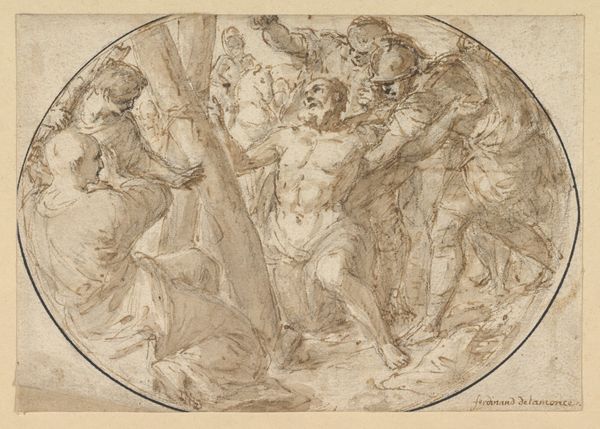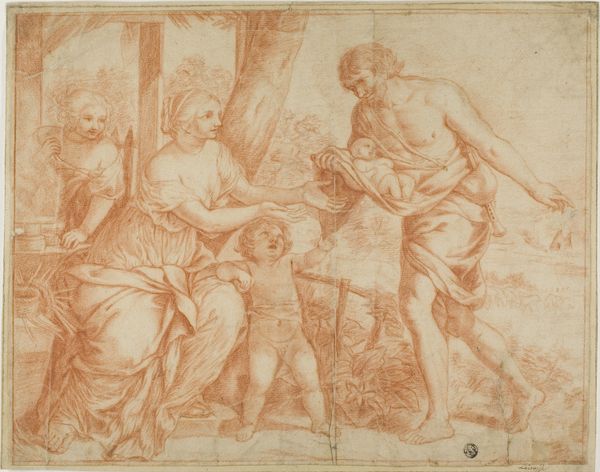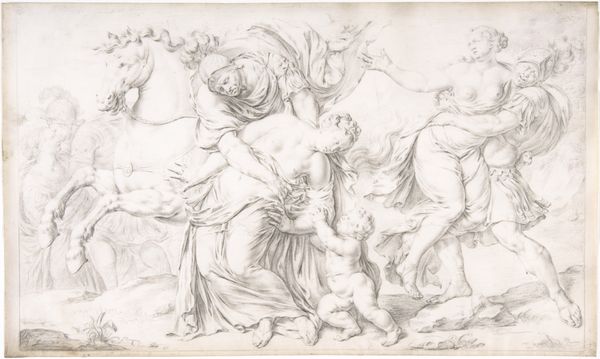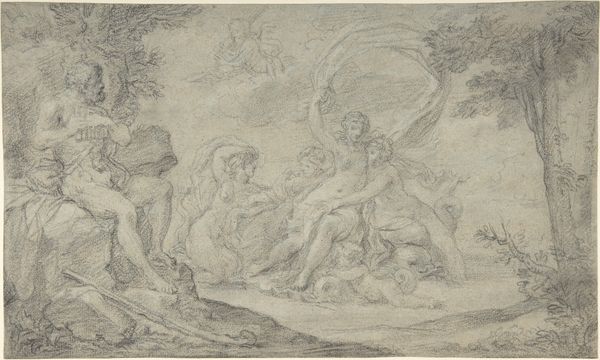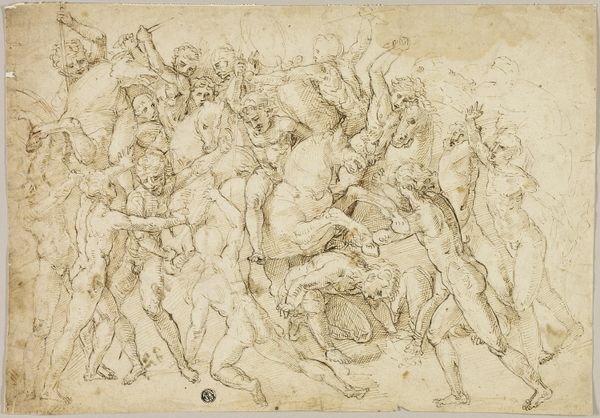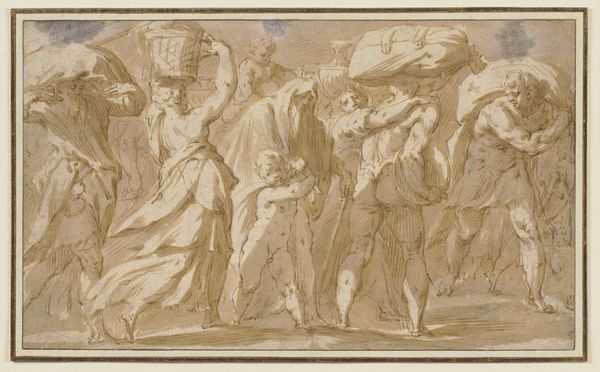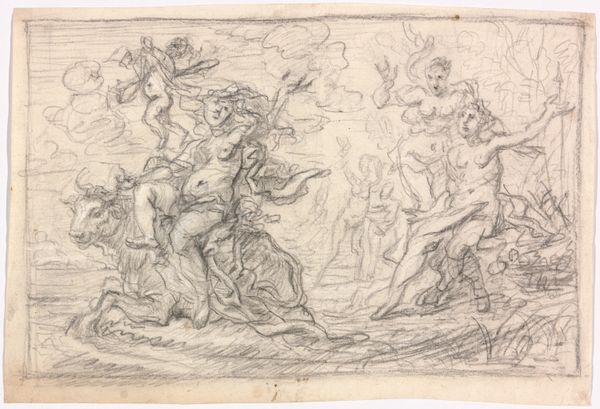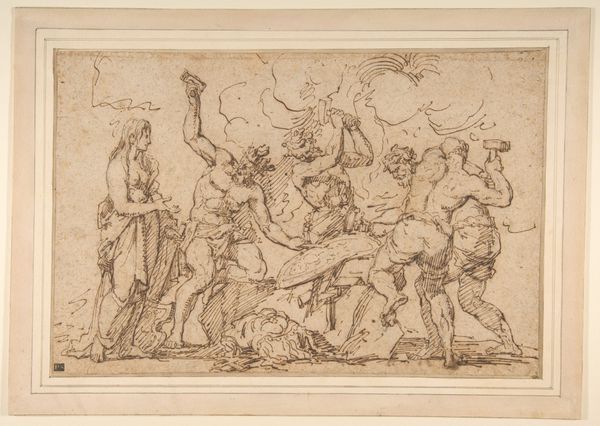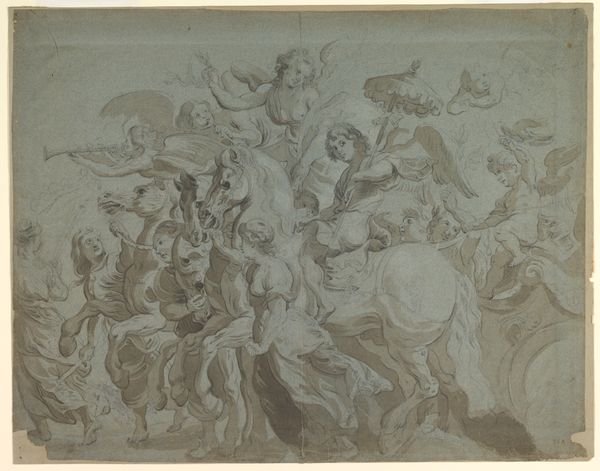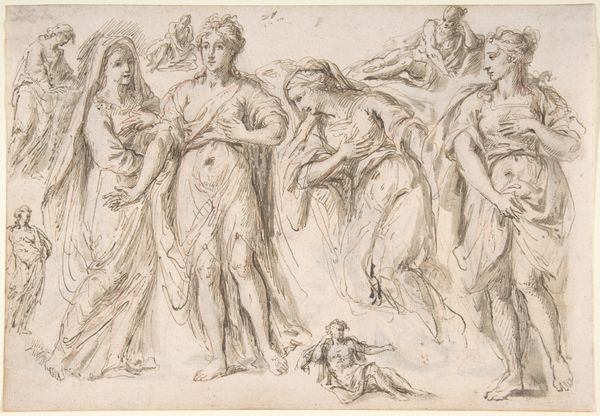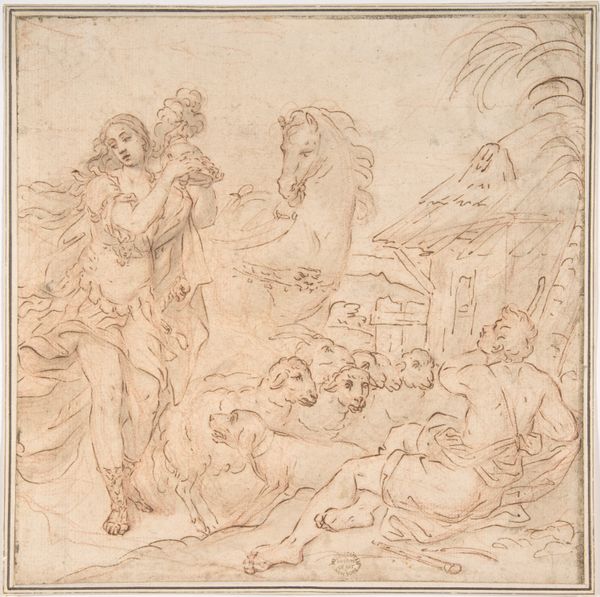
Perseus Beheading Medusa (recto); Studies of a Child and Ornament Sketches (verso) 1560 - 1609
0:00
0:00
drawing, paper, ink
#
drawing
#
narrative-art
#
mannerism
#
figuration
#
paper
#
ink
#
history-painting
#
italian-renaissance
Dimensions: sheet: 5 1/16 x 9 7/16 in. (12.8 x 24 cm) maximum, arch-shaped
Copyright: Public Domain
Curator: Let's discuss this fascinating ink drawing, “Perseus Beheading Medusa,” by Annibale Carracci, created sometime between 1560 and 1609. Editor: My first impression is of dramatic tension, even in this sketch. The energy practically leaps off the paper. It looks so fluid, and yet controlled. Curator: Absolutely. Consider the power dynamics at play. Medusa, often interpreted as a figure of female rage and victimhood, is here actively decapitated by Perseus. The composition presents us with a complex layering of power, and gendered violence. The figures of Perseus and Medusa can be understood in terms of their roles within the historical and social contexts surrounding female oppression. Editor: From a material perspective, notice the meticulous line work with sepia ink and the varying weights creating depth. It really pulls the eye towards Perseus, but the composition seems slightly hurried; the reverse side contains quickly executed studies of children, hinting towards the broader application of the drawing for other things. Curator: Precisely, those looser sketches suggest this may have been a study for a larger composition. But look how the narrative unfolds, Carracci isn’t simply illustrating a myth; he’s offering commentary. Medusa, stripped of her monstrous gaze, is rendered vulnerable, turning her into a martyr even as she's punished, and how do we interpret that as it related to larger societal treatment of female identity? Editor: It seems the speed in the hand allowed Carracci to develop, through trial and error, both narrative and form using a single, simple material: ink. The dynamism speaks to process of exploration and, eventually, consumption, by viewers who recognize the cultural weight imbued by such gestures. Curator: Ultimately, this drawing gives us insight not only into the myth, but how Carracci viewed power, gender and ultimately morality within his own historical moment, an understanding we can use to understand our own. Editor: Indeed, whether seen as exploration or potent narrative statement, it shows how even simple tools like ink can be a technology in its own right and communicate profound observations.
Comments
No comments
Be the first to comment and join the conversation on the ultimate creative platform.
